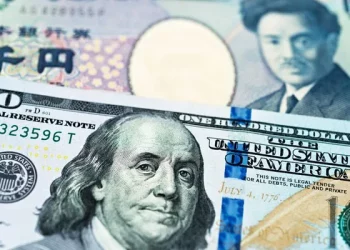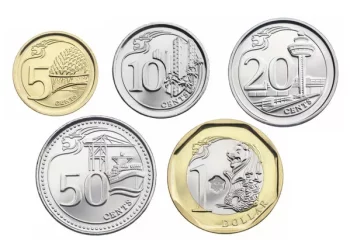The People’s Bank of China (PBOC) is the central bank of the People’s Republic of China, responsible for implementing monetary policy, regulating financial institutions, and maintaining financial stability. As the central bank of the world’s second-largest economy, the PBOC plays a critical role in global financial markets. This article provides an in-depth look at the PBOC’s functions, tools, and influence on both domestic and international economies.
History and Structure of the PBOC
Historical Background
The PBOC was established on December 1, 1948, through the merger of the Huabei Bank, the Beihai Bank, and the Xibei Farmer Bank. It initially operated as a state-owned commercial bank but evolved into a central bank after economic reforms in the late 1970s and early 1980s. The PBOC’s transformation into a modern central bank began in 1983, and by 1995, it had clearly defined roles and responsibilities under the Law of the People’s Republic of China on the People’s Bank of China.
Organizational Structure
The PBOC’s organizational structure includes various departments and regional branches, each responsible for different aspects of monetary policy and financial regulation. The central headquarters in Beijing oversees:
Monetary Policy Department: Formulates and implements monetary policy.
Financial Stability Bureau: Ensures the stability of the financial system.
Financial Market Department: Regulates financial markets and instruments.
Research Bureau: Conducts economic and financial research to inform policy decisions.
International Department: Manages foreign exchange reserves and international relations.
Functions of the PBOC
The PBOC’s primary functions are similar to those of other central banks but tailored to China’s unique economic and political context. These functions include:
Implementing Monetary Policy
The PBOC uses various monetary policy tools to manage the money supply and influence economic activity. These tools include:
Open Market Operations (OMO): The buying and selling of government securities to regulate liquidity in the banking system.
Reserve Requirements: Setting the minimum reserves each bank must hold to control the amount of money they can lend.
Interest Rate Policy: Adjusting benchmark interest rates to influence borrowing and lending rates across the economy.
Regulating Financial Institutions
The PBOC oversees the banking system and other financial institutions to ensure stability and compliance with regulations. It sets prudential standards, conducts inspections, and takes corrective measures when necessary.
Managing Foreign Exchange and Reserves
China’s significant foreign exchange reserves are managed by the PBOC. The central bank intervenes in the foreign exchange market to maintain exchange rate stability and supports the country’s economic and trade policies.
Issuing Currency
The PBOC is the sole issuer of China’s currency, the renminbi (RMB). It manages the currency’s circulation and ensures an adequate supply to meet the economy’s needs.
Promoting Financial Stability
The PBOC works to prevent and mitigate systemic risks in the financial system. This includes monitoring financial institutions, markets, and instruments to identify vulnerabilities and take preemptive action.
Tools and Mechanisms of Monetary Policy
Open Market Operations (OMO)
The PBOC conducts open market operations to regulate liquidity in the financial system. These operations involve the purchase and sale of government securities, which directly impact the money supply. By buying securities, the PBOC injects liquidity into the banking system, encouraging lending and investment. Conversely, selling securities absorbs liquidity, slowing down economic activity.
Reserve Requirements
The reserve requirement ratio (RRR) is a powerful tool used by the PBOC to control the money supply. By adjusting the RRR, the central bank influences the amount of funds that banks can lend. A lower RRR means banks can lend more, stimulating economic activity, while a higher RRR restricts lending, helping to cool down an overheating economy.
Interest Rate Policy
Interest rate adjustments are a primary mechanism for influencing economic conditions. The PBOC sets benchmark interest rates, such as the one-year lending rate and the deposit rate, which serve as references for banks’ lending and deposit rates. Changes in these rates affect borrowing costs for consumers and businesses, thereby influencing spending and investment.
See Also: What is the Mandate of the PBOC?
The PBOC’s Role in the Global Economy
Exchange Rate Management
China’s exchange rate policy is a significant aspect of its economic strategy. The PBOC manages the RMB exchange rate to ensure it remains stable against a basket of currencies. This managed float system allows for gradual adjustments while avoiding excessive volatility that could disrupt trade and investment.
Foreign Exchange Reserves
China holds the world’s largest foreign exchange reserves, managed by the PBOC. These reserves provide a buffer against external shocks and are used to stabilize the RMB. The PBOC’s management of these reserves involves diversifying investments across different asset classes and currencies to minimize risk and maximize returns.
International Cooperation
The PBOC engages with other central banks and international financial institutions to coordinate policy and address global economic challenges. It participates in forums such as the International Monetary Fund (IMF), the Bank for International Settlements (BIS), and the G20, contributing to discussions on global financial stability and economic growth.
Challenges and Future Directions
Balancing Growth and Stability
One of the PBOC’s primary challenges is balancing economic growth with financial stability. Rapid economic expansion can lead to asset bubbles and increased debt levels, while too much emphasis on stability can stifle growth. The PBOC must carefully calibrate its policies to support sustainable development.
Financial Sector Reforms
As China’s economy evolves, the PBOC faces the task of modernizing its financial sector. This involves liberalizing interest rates, developing capital markets, and improving regulatory frameworks to support innovation and competition.
Digital Currency
The PBOC is at the forefront of central bank digital currency (CBDC) development with its Digital Currency Electronic Payment (DCEP) initiative. This digital RMB aims to enhance payment efficiency, reduce transaction costs, and improve financial inclusion. The PBOC’s pioneering efforts in this area could set a precedent for other central banks.
Conclusion
The People’s Bank of China plays a crucial role in shaping the country’s economic landscape. Through its monetary policy tools, regulatory oversight, and international engagements, the PBOC strives to maintain financial stability, support economic growth, and navigate the complexities of a rapidly changing global economy. Understanding the PBOC’s functions and mechanisms provides valuable insights into the workings of one of the most influential central banks in the world.
Related Topics:



























